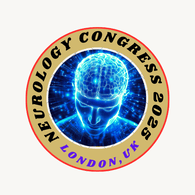Call for Abstract
Scientific Program
39th European Neurology Congress, will be organized around the theme “{CME & CPD Credits available} Advancing Neurology: Technology at the Forefront of Neuroscience”
Neurology Congress 2025 is comprised of keynote and speakers sessions on latest cutting edge research designed to offer comprehensive global discussions that address current issues in Neurology Congress 2025
Submit your abstract to any of the mentioned tracks.
Register now for the conference by choosing an appropriate package suitable to you.
Neurodegenerative diseases are progressive conditions that lead to the degeneration of neurons and synapses, affecting cognitive, motor, and other functions. Alzheimer's disease, Parkinson's disease, and Huntington's disease are some of the most common neurodegenerative disorders. These diseases are often marked by protein misfolding, mitochondrial dysfunction, and neuroinflammation. Therapeutic strategies aim to slow disease progression, alleviate symptoms, and improve quality of life. Current approaches include drug therapies, stem cell treatments, gene therapies, and lifestyle modifications. For Alzheimer's, acetylcholinesterase inhibitors and glutamate regulators are used to manage symptoms, though there is no cure. Parkinson’s therapy focuses on dopamine replacement or mimics, while Huntington’s has limited options for symptomatic control.Future strategies involve precision medicine, targeting genetic factors or disease-modifying agents. Research into neuroprotective drugs, cell-based therapies, and interventions at the molecular level is essential for developing more effective treatments. The challenge remains in identifying drugs that can effectively modify disease pathology without adverse effects.
Brain imaging has evolved significantly over the past few decades, allowing for more accurate diagnosis and monitoring of neurological conditions. Techniques such as MRI, CT scans, PET scans, and functional MRI (fMRI) provide valuable insights into brain structure and activity. Advanced imaging can detect early changes in neurodegenerative diseases, stroke, and brain injuries.MRI provides high-resolution images of soft tissues, while functional MRI allows for the study of brain activity during specific tasks. PET scans help in detecting biochemical changes, such as abnormal amyloid deposits in Alzheimer’s. Diffusion Tensor Imaging (DTI) is another advancement, which maps white matter tracts, aiding in understanding conditions like multiple sclerosis or traumatic brain injury.Genetic and molecular imaging techniques are emerging, offering the potential for more targeted diagnostic and therapeutic approaches. Machine learning and AI algorithms are also being integrated into imaging to enhance diagnostic accuracy, predict outcomes, and guide treatment decisions.
Neurovascular disorders including stroke, transient ischemic attacks (TIAs), and aneurysms, represent a significant cause of morbidity and mortality worldwide. Stroke is primarily classified into ischemic (due to a blockage in blood flow) and hemorrhagic (due to bleeding in the brain) types.Preventive strategies focus on managing risk factors like hypertension, diabetes, smoking, and hyperlipidemia. Antiplatelet drugs, anticoagulants, and blood pressure management are used to reduce stroke risk. For ischemic strokes, thrombolytics or mechanical thrombectomy are used to restore blood flow.Rehabilitation and post-stroke care focus on recovery and improving quality of life. Early intervention and clot-busting treatments can significantly improve outcomes. Research into genetic and molecular factors influencing stroke risk is underway, which could lead to personalized prevention and treatment strategies.Lifestyle modifications and early identification of at-risk individuals are key to reducing the global burden of neurovascular diseases.
Cognitive neuroscience examines the relationship between brain structures and cognitive functions such as memory, perception, and decision-making. Alzheimer's disease (AD), a common neurodegenerative condition, is characterized by cognitive decline, especially memory loss, and affects millions globally.The primary pathological hallmarks of AD include the accumulation of amyloid plaques and tau tangles, which disrupt normal brain function. These abnormalities lead to neuronal damage and shrinkage of brain areas involved in memory and cognition.Current therapeutic strategies for AD include cholinesterase inhibitors and NMDA receptor antagonists, but they primarily manage symptoms rather than halting disease progression.Cognitive neuroscience research explores the neurobiological basis of memory, language, and attention, with a focus on understanding how these processes are altered in Alzheimer’s. There is also growing interest in biomarkers for early detection and interventions that could slow disease progression. Technological advancements in imaging and genetics are playing a crucial role in uncovering new insights into AD, and potential drug therapies aim to target the root causes of the disease.
Artificial intelligence (AI) has the potential to revolutionize neurology by enhancing diagnostic accuracy, predicting outcomes, and personalizing treatment. Machine learning algorithms are trained on large datasets to recognize patterns in imaging, clinical records, and genetic data.In neurology, AI applications are particularly prominent in brain imaging, where algorithms can detect abnormalities such as tumors, plaques, or lesions. AI is also being used to analyze EEG patterns in epilepsy, predict stroke risk, and assist in the diagnosis of neurodegenerative diseases.AI-driven diagnostic tools provide faster, more consistent interpretations of complex data, helping neurologists make better-informed decisions. These systems can also predict patient outcomes based on historical data, guiding treatment plans. However, challenges remain, including data privacy concerns, the need for large and diverse datasets, and ensuring that AI systems are transparent and interpretable. Collaboration between neurologists and data scientists is essential for AI tools to be fully integrated into clinical practice.

